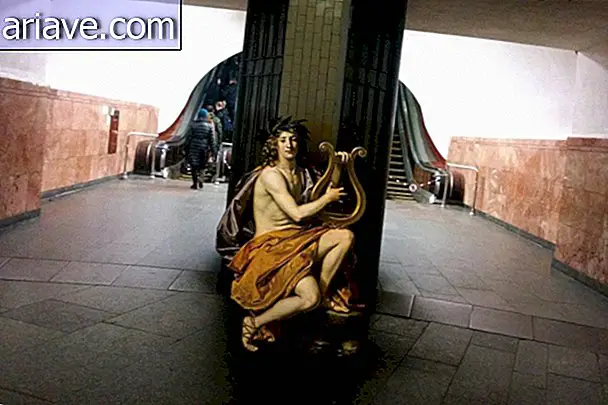5 references to racism in Childish Gambino's clip “This is America”
Last Saturday (5), rapper Childish Gambino released the video "This is America", which is now being considered one of the best of the year. Undisguisedly, he shows scenes of violence and death to criticize the historical racism suffered by African descendants in the United States. So far, the video has about 40 million views.
Have you never heard of the singer? Childish Gambino is the codename used by actor Donald Glover in his musical works. As an actor, he won the Golden Globe and Emmy for his performance in the "Atlanta" series, created, directed and written by Glover himself! Although he usually approaches racism in his works, it was with the clip of "This is America" that Glover poked at the historic American wound. Haven't watched yet? See now:
Now, check out 5 references about afro culture and racism in the clip:
1. Jim Crow
Jim Crow is a folk character of American slavery: present in many songs, he was described as a lazy, stupid, inferior slave on the human scale, something that “caught on” to describe any African descent of the time. Thomas D. Rice, a white actor, adapted this character to the theater, painting his body and face black - such a blackface - and acting very stereotypically.
Childish Gambino brings this representation right at the beginning of the video for “This is America”. Right in the first murder, he assumes a classic stance of depictions of Jim Crow, with crooked legs, ungainly gait and grimaces. The fact that Crow killed another black character, which would be the representation of blues players, typical of Afro-American culture, would be a way of showing that it was the representation of blacks as inferior people that prevailed in the popular imagination.

2. Charleston Massacre
Mass killings are not uncommon in the United States, yet all shock the population. In June 2015, such an event took place in Charleston, South Carolina: 21-year-old white supremacist Dylan Roof entered the Emanuel African Methodist Episcopal Church and murdered 9 people, including the pastor. Another person was shot and survived. Roof was sentenced to death for the bombing.
Childish Gambino refers to this sad case in the middle of the song: A gospel choir, typical of Afro culture in the USA, appears excited singing, until decimated by the singer who uses a machine gun for this. Guns even appear frequently in the video, being better treated than the dead, a possible criticism of Gambino to the easy armament of the population and the overvaluation of the weapons to the detriment of human life.

3. African dance
The video is very choreographed, with several moments when Childish Gambino dances alone or accompanied. In addition to traditional American culture steps from rap and hip hop, Gambino also alludes to shoki and gwara gwara, typical of South Africa. Afro dance is exhibited as a cultural trait admired by many people.
But while these scenes are shown, a pandemonium happens in the background. It is believed that, despite extolling dance as a resistance movement, Gambino is showing that people are often distracted and unaware of the violence that the African descent community suffers daily. Even a guy committing suicide in the background goes unnoticed at first glance, a critique of the growing number of suicides among young African Americans.

4. Police brutality
More and more videos show US police truculence against brown, black or Latino citizens. This has led to a growing debate about police behavior in addressing people of these ethnic groups, showing that there is a wide disparity in their treatment of white people.
In Childish Gambino's video, this can be seen in a scene where young Afro with white cloths in their mouths - as if silenced - appear holding cell phones filming the whole action. It is as if Gambino shows that they are part of the movement that tries to denounce the brutality suffered by his fellow blacks. In addition, some believe that this scene would be a reference to the police killing of 22-year-old Stephon Clark in March this year: his cell phone was "mistaken" for a gun.

5. Freedom
Present from the French to the American people, the Statue of Liberty celebrates the independence of the United States and the free land that immigrants will find when they arrive. The reality today is quite different: immigrants suffer constant persecution and Uncle Sam's Land is no longer synonymous with prosperity.
At the very end of the video “This is America”, singer-songwriter Solána Imani Rowe, known as SZA, appears as a rereading of the Statue of Liberty watching Childish Gambino's solo dance. This scene takes place shortly after all the chaos of the clip, in a moment of calm, that is, a critique of the hypocrisy of the American people, in which "Freedom" passively watches chaotic events doing nothing.

***
Did you know that fans of movies and series are now in Clube Minha Serie? In this space, you can also write and find other experts about your favorite shows! Access here and participate.











